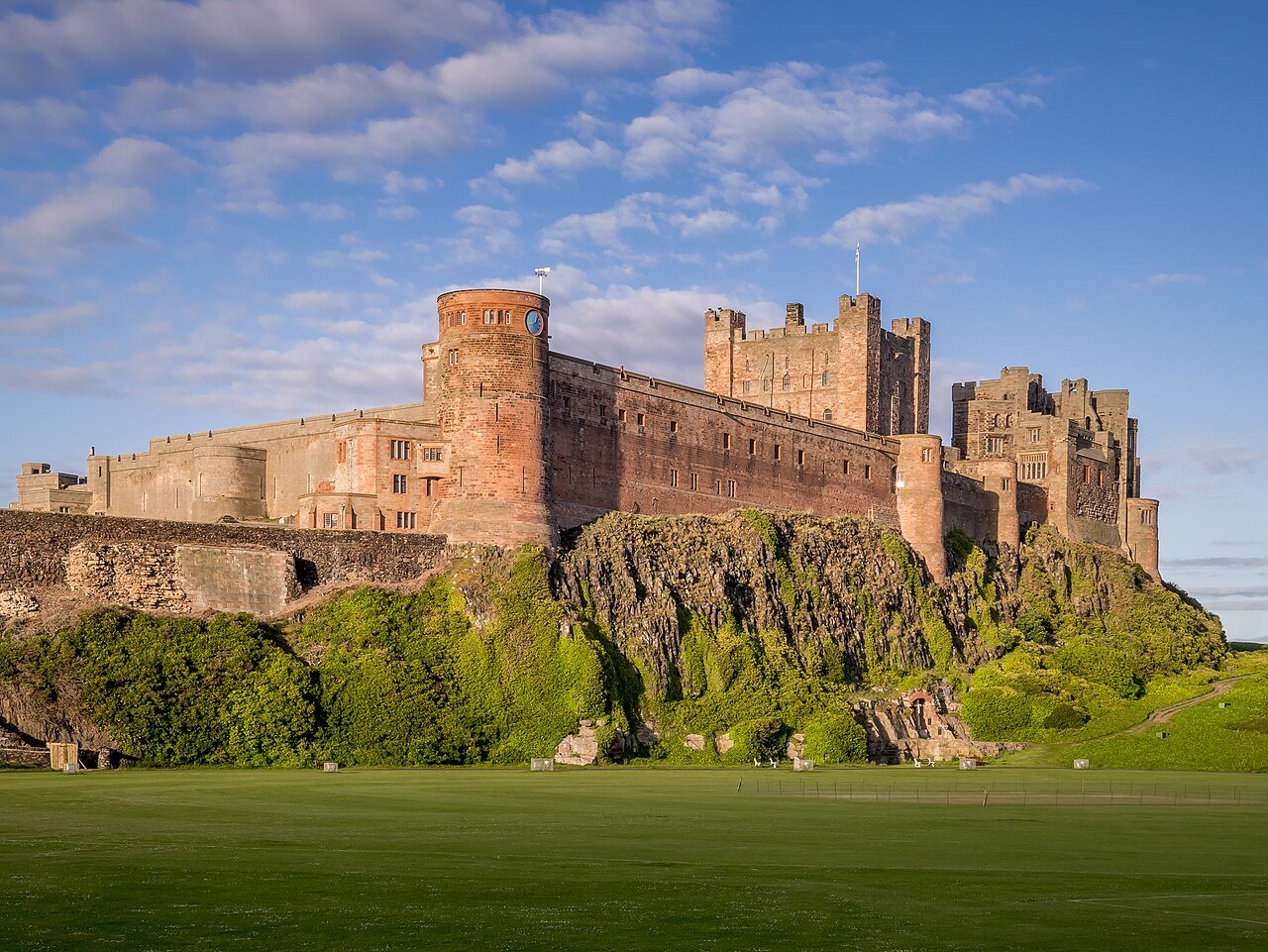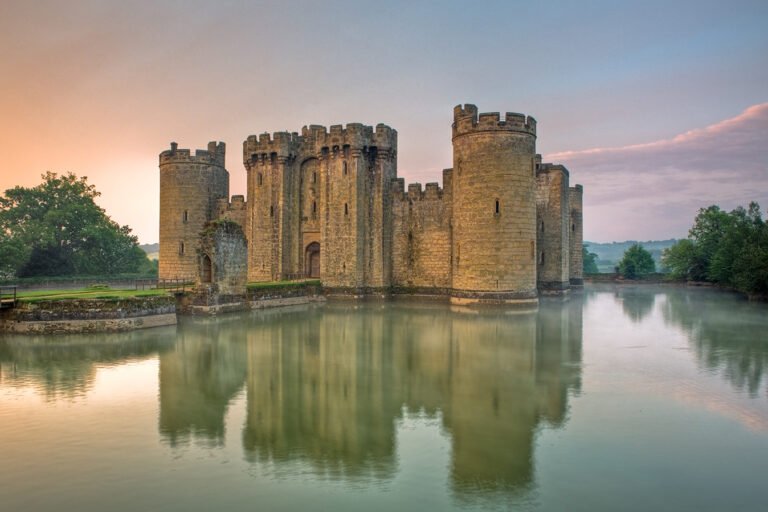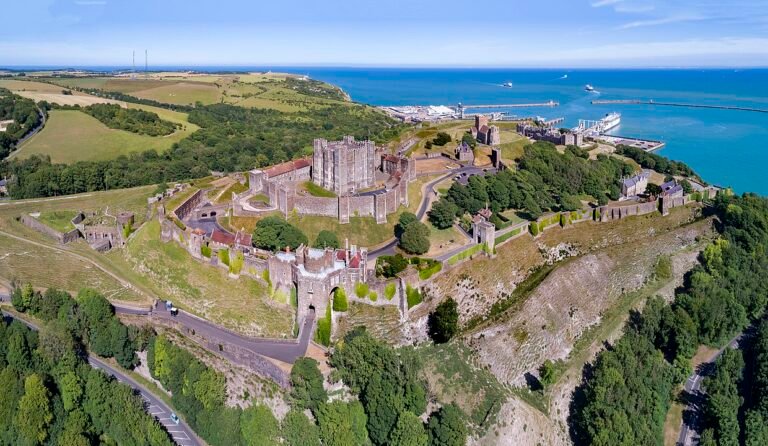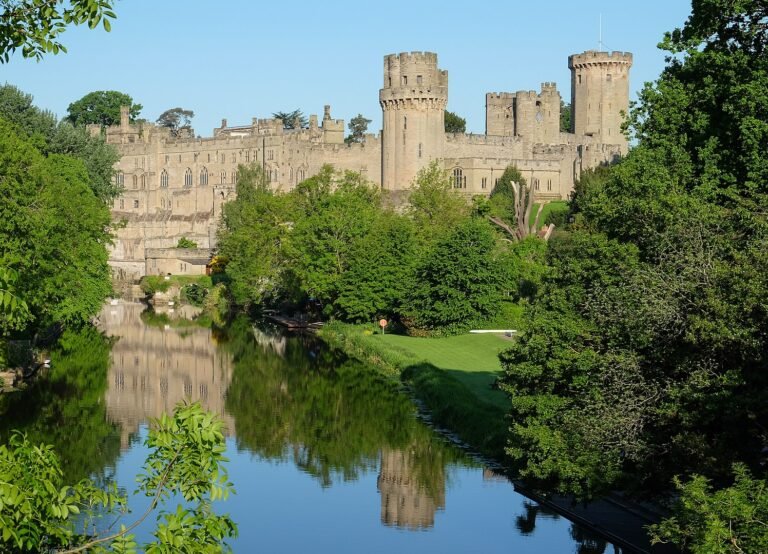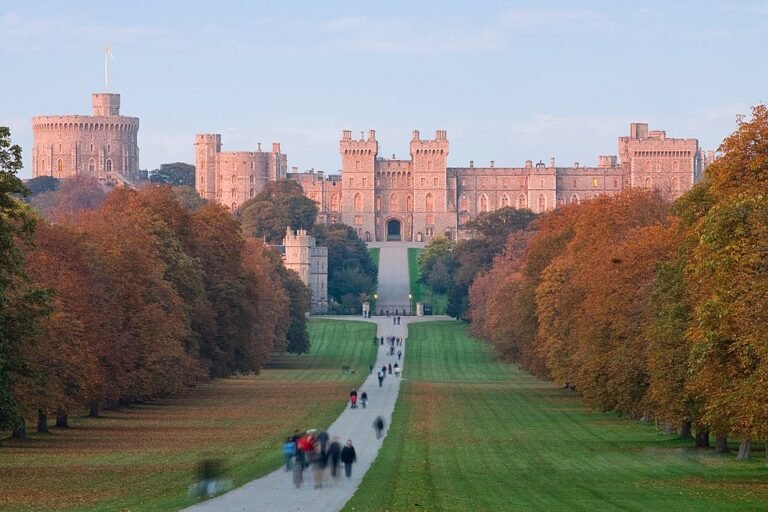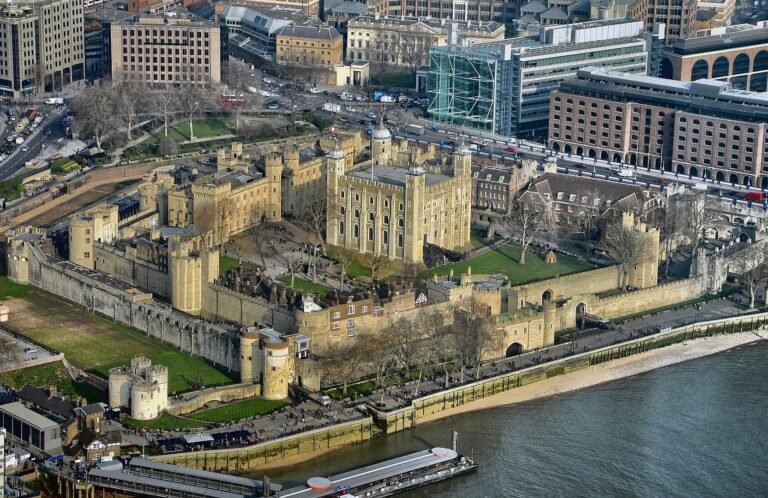Bamburgh Castle: A Timeless Coastal Marvel of Northumberland
Bamburgh Castle: Embark on a Journey Through Time and Tide
Bamburgh Castle: Perched dramatically atop a basalt crag overlooking golden sands and the restless North Sea, Bamburgh Castle is more than just a medieval fortress; it’s a living chronicle of British history, myth, and coastal beauty. Standing guard for more than 1,400 years, it invites visitors into a realm where ancient kings, Victorian visionaries, and modern storytellers converge. Whether you’re a history buff, a family planning an inspiring outing, a couple seeking atmospheric grandeur, or a solo traveller craving a blend of solitude and spectacle, this Northumbrian gem rewards all.
Bamburgh Castle: A Storied Past: From Celtic Fort to Norman Stronghold
Early Origins & Anglo-Saxon Legacy
- The site began as Din Guarie, a Celtic Brittonic fort, possibly serving as the capital of the kingdom of Bernicia from the 5th century until around AD 547. In that year, Anglo-Saxon ruler King Ida of Bernicia captured it, marking the beginning of a new epoch.
- Through the centuries (590 AD and beyond), control of the fort shifted multiple times between Britons and Anglo-Saxons, and by the early 7th century, it settled into Anglo-Saxon hands. The name “Bebbanburh” is derived from King Ethelfrith’s wife Bebba and is the origin of today’s “Bamburgh”.
Norman Transformation & Medieval Turmoil
- The Normans erected a new stone castle where the wooden fort once stood; this structure still forms the core of the castle today.
- In 1095, a siege unfolded after the Earl of Northumbria, Robert de Mowbray, rebelled, eventually ceding the castle to the Crown, and Henry II likely built the keep, completed by 1164.
- The Wars of the Roses brought renewed attention when the castle endured a nine-month siege by the Earl of Warwick in 1464.
Decline, Revival, and Victorian Flourish
- By the 17th century, financial woes led to neglect. In the early 1700s, Lord Crewe took over and made modest restorations and even established a small hospital.
- The most dramatic rebirth unfolded between 1894 and the early 1900s, when industrialist William George Armstrong purchased the castle and realised his vision of an idealised medieval fortress.
Archaeology Beneath the Walls
- Excavations beginning in the 1960s and continuing through the Bamburgh Research Project (1990s–present) have revealed Anglo-Saxon treasures, notably the Bamburgh Sword and the stunning gold Bamburgh Beast plaque.
- The nearby Bowl Hole burial ground, unearthed in the dunes, held remains of individuals from diverse origins, some of which are now housed in the crypt of St Aidan’s Church, viewable by visitors since 2019.
Bamburgh Castle: Engaging Attractions: Inside and Out
Castle Interior & Museums
- The enormous estate spans nine acres, making it one of the largest inhabited castles in England.
- Visitors can explore its Great Hall, keep, battlements, and archaeological displays. The Armstrong & Aviation Artefacts Museum showcases Armstrong’s inventions and aviation lore.
- The Stables now host a café, lockers, and a dog-friendly zone perfect for families and relaxed visits.
Grounds, Views & Conservation
- Wander the ramparts for breathtaking panoramas from Lindisfarne to the Cheviots, a compelling reason for photographers and romantics alike to stay a while.
- Step onto the Bamburgh Dunes, an SSSI and conservation area spanning over 40 hectares. See dunes alive with rare flora, insects, and birds.
Nearby Heritage & Legend
- Pop into St Aidan’s Church, founded on the site of a 7th-century wooden church by the monk St Aidan. Its chancel is one of the longest in the country.
- The village of Bamburgh doubles as a charming historic setting, voted the UK’s best seaside town for four consecutive years.
Bamburgh Castle: Practical Travel Tips
- Getting There: Accessible by car via A1; 1 hour from Newcastle, 90 minutes from Edinburgh. Trains to Berwick-upon-Tweed, then bus X18 to Bamburgh.
- Opening Hours & Tickets: Year-round with seasonal variations. Check the official site for current info and timed entries.
- Facilities: Family-friendly amenities include lockers, café, accessible paths (ground interiors less so), and a dog-friendly Stables area.
- Timing Your Visit: Try a weekday in shoulder season. Combine castle touring with a beach stroll or dune walk.
- Guided Experiences: The “Uhtred of Bebbanburg” storytelling tour immerses visitors into The Last Kingdom saga.
- Tours: Daytrip options include visits to Alnwick Castle or Lindisfarne, often with private guides or group departures.
Itineraries to Inspire
1-Day Coastal Immersion
| Time | Activity |
|---|---|
| 10:00–12:00 | Explore the castle interiors, battlements, and museum galleries. |
| 12:00–13:00 | Lunch in the Stables café or nearby amenities. |
| 13:00–14:00 | Leisurely walk on Bamburgh Beach or among the dunes. |
| 14:00–15:00 | Visit St Aidan’s Church and crypt. |
| 15:00–16:30 | Enjoy coastal views, sunset photography, or local shopping. Optional: Alnwick Castle tour. |
2–3 Day Northumbrian Heritage Loop
- Day 1: Arrive in Bamburgh, evening beach walk.
- Day 2: Full castle and dune exploration; guided Uhtred tour; dine at Potted Lobster or Bait at Bamburgh.
- Day 3: Morning boat trip to the Farne Islands; visit Alnwick Castle or Grace Darling museums. Optional glamping retreat at Woodland Chase.
Accommodation & Dining Highlights
- Stay Options: Family-run B&Bs, boutique hotels in Bamburgh village, or countryside retreats like Woodland Chase Glamping.
- Dining: Highlights include Bait at Bamburgh, Potted Lobster, Clock Tower Tearoom, and Copper Kettle.
From Bamburgh Castle to Broader UK Themes
- Heritage Tourism: Bamburgh exemplifies immersive curation of history from the Celtic to the Victorian eras.
- Film & Literature Locations: Featured in The Last Kingdom, Indiana Jones, and medieval ballads.
- Coastal Conservation: Bamburgh’s dunes are managed sustainably to preserve rare habitats.
- Trail Networks: Use Bamburgh as a base to explore Lindisfarne, Alnwick, Dunstanburgh, and Northumberland’s natural beauty.
Final Words
Bamburgh Castle is not just a castle, it’s an epic living tapestry: history you can touch, stories you can walk through, and views that still echo the past. It’s approachable for families, rich in romance for couples, and full of quiet revelations for solo explorers. From archaeological treasures to conservation efforts and artisan dining, this castle offers a multifaceted experience worthy of unforgettable memories.
FAQs: Bamburgh Castle
What are the opening hours and admission prices?
Open daily from 10 am to 5 pm (last entry at 4 pm). Adult tickets £18.75, children £9.40, under-4s free. Book online; card only.
Is Bamburgh Castle accessible and pet-friendly?
Yes, shuttle service and accessible paths are available. Dogs are allowed outdoors on leads but not inside.
Who owns Bamburgh Castle today?
Still owned by the Armstrong family, descendants of William Armstrong, who restored the castle in the 1890s.
What significant artefacts are found here?
The Bamburgh Sword and Bowl Hole burials, housed in St Aidan’s Church crypt.
What is the link to St Aidan’s Church?
Founded in AD 635, the church sits near the castle and holds archaeological remains in its crypt.
Why are the Bamburgh Dunes important?
Designated an SSSI, the dunes support rare plants and insects and are managed sustainably.
Has Bamburgh Castle featured in films or literature?
Yes – seen in Indiana Jones, The Last Kingdom, and inspired by Arthurian legends.
